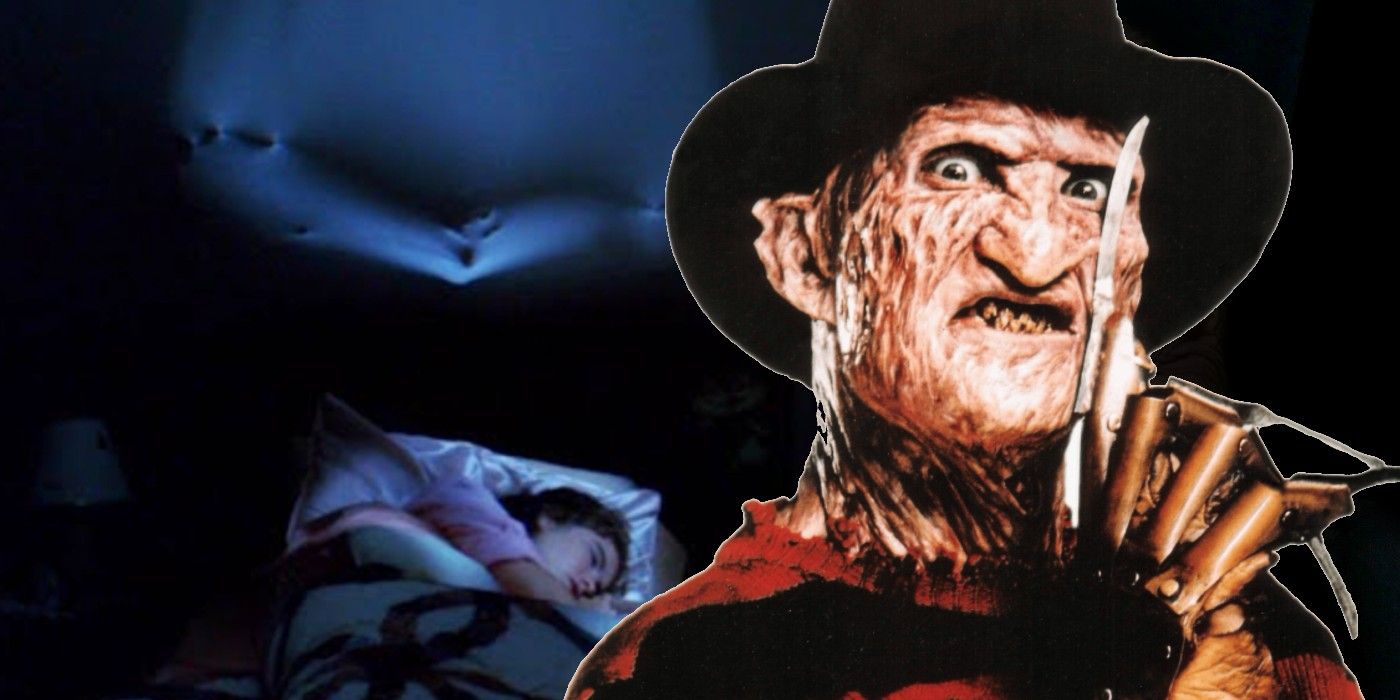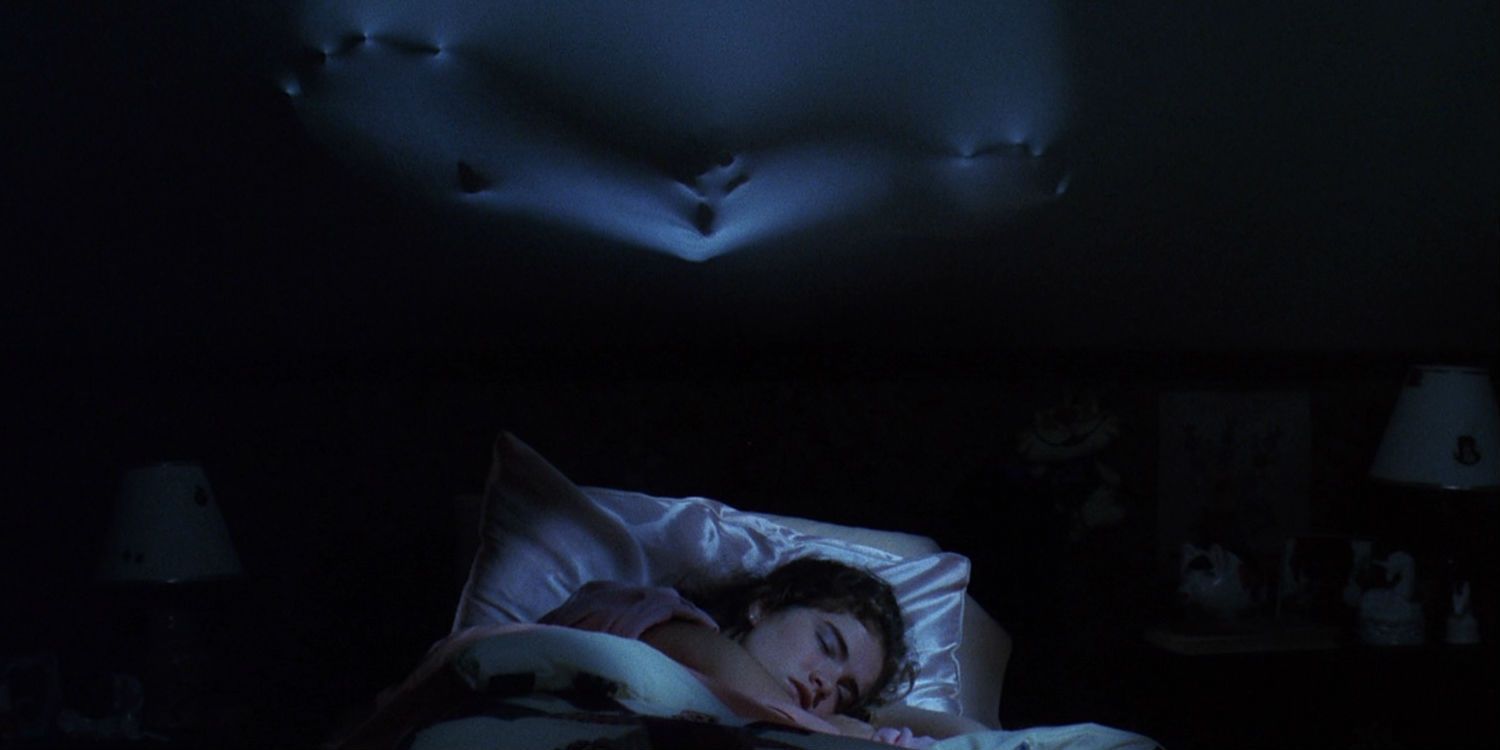
One of the most unforgettable scenes in Wes Craven’s A Nightmare on Elm Street is when Freddy Krueger tries to infiltrate Nancy’s subconscious and tries to come through the wall, and here’s how that effect was achieved without CGI. Although Wes Craven explored different genres throughout his career as a filmmaker, he’s best remembered for his work in the horror genre, which began in 1972 with the exploitation movie The Last House on the Left. Craven’s big break arrived in 1984 with A Nightmare on Elm Street, which introduced the audience to a one-of-a-kind slasher with a unique method to haunt his victims.
A Nightmare on Elm Street follows four teenagers who become the target of Freddy Krueger (Robert Englund), a villain with a specific plan: terrorize his victims in their dreams, so if he kills them there, they also die in real life. A Nightmare on Elm Street was a financial and critical success and is now regarded as one of the greatest horror movies ever made, and it also helped to further develop the slasher subgenre while boosting the careers of its main cast, most notably that of a young Johnny Depp. The movie also spawned a franchise consisting of movies, TV shows, comic books, and even a crossover with Friday the 13th in Freddy vs Jason, and continues to be a favorite among horror fans. A Nightmare on Elm Street also has various memorable lines and moments, among those one with an impressive visual effect (and no blood) that sent chills down the spines of viewers.
Once Freddy Krueger starts to terrorize and haunt Nancy (Heather Langenkamp) and her friends in their dreams, there’s an unforgettable scene where Nancy is asleep and Krueger tries to infiltrate her subconscious. This is visually represented by Freddy trying to come through the wall and reach out to Nancy, but she wakes up and grabs a crucifix. Freddy eventually reaches her later on in the movie, but Nancy comes up with a plan to bring him to the real world so he’s now the vulnerable one and defeats him, though the ending of the movie shows that Freddy just can’t be destroyed. Like many other scenes and effects in A Nightmare on Elm Street, that “wall scene” wasn’t achieved through computer-generated effects, and it was all thanks to the magic of practical effects.

To create the effect of Freddy Krueger coming through the wall to get to Nancy, special effects designer Jim Doyle came up with the idea of creating a wall with a hole and spandex over it, so that Krueger could press against it and give the illusion that he was trying to reach Nancy through the wall. Funny enough, the Freddy Krueger in that specific scene isn’t Robert Englund but Doyle himself, who got to play the famous slasher just for that moment. Doyle is also the mind behind Freddy Krueger’s iconic glove, which has its own history, as do other details about the character, such as the sweater and the real-life inspiration behind this villain. Of course, this isn’t the only scene in A Nightmare on Elm Street that used practical effects, and other examples are Tina’s and Glen’s deaths, the latter standing out due to the massive amount of fake blood that was used.
Wes Craven is not only remembered for using horror clichés in his movies and giving them a fresh twist, but also for how he and his team achieved some truly impressive scenes with practical effects. Learning how the most famous scenes in A Nightmare on Elm Street were shot surely elevates the viewing experience and further establishes it as one of the most influential horror movies in history.
from ScreenRant - Feed https://ift.tt/2YU7Osa


0 Comments